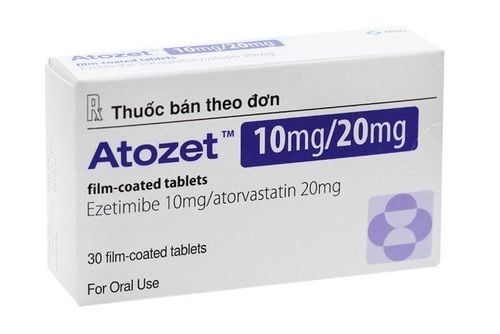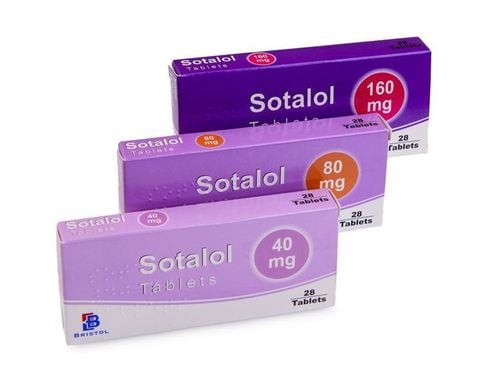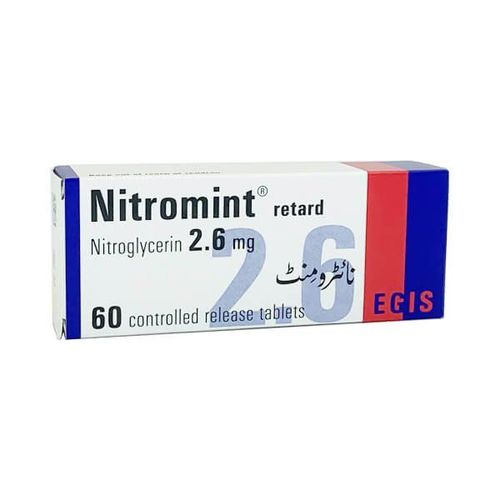This is an automatically translated article.
Coronary artery disease is one of the dangerous diseases, which can have serious consequences for health as well as economy if not detected and treated promptly. In order to reduce the burden of cardiovascular disease in general and coronary artery disease in particular, patients need to actively undergo periodic health check-ups and screen for cardiovascular diseases to have the opportunity to treat the disease early and limit the risk of cardiovascular disease. symptoms.
1. Who needs screening for coronary heart disease?
Coronary artery disease is one of the dangerous diseases, it can leave serious health and economic consequences if not detected and treated in time. Lessons learned from developed countries show that in order to reduce the burden of cardiovascular disease in general and coronary heart disease in particular to public health, strong actions are required including:
Prevention work. Health education. Early detection of coronary heart disease screening so that patients can receive timely treatment helps to reduce mortality and improve patients' quality of life. Control risk factors. Stabilizes atherosclerotic plaque. Accordingly, subjects that need to be screened for coronary artery disease include:
Patients with suspected clinical symptoms such as coronary artery disease-type angina, because angina is a typical sign. Coronary disease warning
People with many risk factors for coronary heart disease such as:
Age ≥45 for men and ≥55 for women. Diabetic patients. People with dyslipidemia. People with high blood pressure. Smoker. Family history of early coronary heart disease MORE: Why are there coronary complications in people with diabetes?

Đau thắt ngực là dấu hiệu điển hình cảnh báo bệnh mạch vành
2. What does screening for coronary heart disease do?
2.1. Clinical examination of angina Classifies typical and atypical angina according to the AHA/ACC 1999 criteria. Framingham score assesses the risk of coronary events over 10 years, based on factors following:
Age Gender Hypertension Smoking Total cholesterol (TC) High density cholesterol (HDL-C) Clinical features such as age, sex, chest pain symptoms and cardiac risk factors The pulse is meaningful to help preliminary diagnosis and predict whether the patient's likelihood of coronary heart disease is high or low. From there, the doctor will guide the appointment of appropriate screening measures next.
2.2. Routine ECG Routine ECG has low sensitivity and specificity but is still an indispensable initial screening measure. Because this is a simple, low-cost method and is always available at the primary health care level.
2.3. Electrocardiographic stress test (NPGS) NPGS using a running mat according to the Bruce procedure. Evaluation of NPGS results according to the AHA/ACC criteria in 2002. The stress ECG test has a relatively high sensitivity and specificity, higher than the routine ECG in screening for coronary heart disease. This method should be indicated for subjects at moderate risk of coronary heart disease.
Electrocardiographic stress testing is recommended to be implemented in all Cardiology departments of provincial and city hospitals and regional general hospitals.
2.4. Multi-sequence tomography (MSCT) of coronary arteries Analysis of results of coronary multi-sequence tomography (MSCT):
Evaluation of coronary calcification by Ca-scoring program on Circulation-Leo software system workstation-SensationSiemens (according to Agatston scale). Reconstruct the coronary system image using the program Circulation. Evaluation of lesions on cross-sectional and longitudinal images of coronary branches by 3D MPR, 3D MIP, circulation programs. Multi-slice computed tomography (64/128) is an advanced technique that can build images with high accuracy of anatomical features as well as diagnose lesions in the coronary artery system.
This method is especially useful in excluding coronary artery disease from other diseases.

"Sàng lọc bệnh mạch vành cần làm những gì?" là vấn đề được nhiều người quan tâm
2.5. Coronary angiography Percutaneous selective coronary angiography using contrast medium. Assess the degree of coronary stenosis: The degree of stenosis is usually expressed as a percentage (%) of stenosis compared with the normal coronary artery right next to the stenosis. It is called severe stenosis (significant stenosis) when the stenosis is >70% in the right coronary artery and the two branches of the LAD and LCx and >50% stenosis in the left main trunk. Indications for coronary angiography in the following cases:
Patient has atypical chest pain. People with suspected coronary artery disease have had some other tests done: echocardiography, exercise testing, ... People with risk factors for cardiovascular disease: Hypertension, diabetes, increase blood fat. In case it is necessary to identify and monitor the anatomical abnormalities of the coronary system. Follow-up of patients after bypass surgery, stent placement. Coronary angiography is also indicated to identify some other pathologies in the heart: Heart valve disease (mainly aortic valve, mitral valve), myocardium. Contraindicated coronary angiography in the following cases:
Patients allergic to contrast. The patient has a history of bronchial asthma, severe COPD. Patients with contraindications to vasopressors if needed: Are being treated with other antiarrhythmic drugs, systolic blood pressure <100mmHG, sinus bradycardia <40l/min, 2nd degree atrioventricular block,.. The patient is uncooperative or the patient has a poor ability to hold their breath. Pregnant. CKD . The patient has extensive coronary calcification (>1000 points).
3. What do screening results for coronary heart disease say?
After your coronary heart disease screening, your doctor will tell you:
How is your coronary condition now. Do you have coronary artery disease? If it is determined that you have coronary artery disease, your doctor will tell you the extent of the disease and recommend the appropriate treatment for your condition. Accordingly, in order to have accurate examination results as well as provide timely treatment regimens, patients should choose reputable medical facilities with modern facilities, a team of experienced doctors and nurses. subject, experience.
With many years of experience in the examination and treatment of cardiovascular diseases, now Vinmec International General Hospital has become one of the major Cardiology centers, possessing a team of qualified doctors and nurses. , well-trained and has a system of modern facilities and medical equipment. As a result, the Cardiovascular Center at Vinmec International General Hospital has the ability to examine, screen, treat and monitor after treatment, and plan recovery after treatment, including cardiovascular disease. rim.
Besides, to improve service quality, now Vinmec International General Hospital also deploys coronary screening packages. The examination packages help patients screen for coronary artery disease accurately, thereby having timely treatment methods, avoiding dangerous complications. The subjects recommended by the doctor to be screened for coronary heart disease include: High blood pressure, diabetes, dyslipidemia, smoking, obesity,... In addition, family history of someone on duty. Having a parent or sibling with coronary heart disease is also considered a risk factor for coronary heart disease. In particular, elderly patients should be screened for coronary heart disease early due to age factors.
Please dial HOTLINE for more information or register for an appointment HERE. Download MyVinmec app to make appointments faster and to manage your bookings easily.













